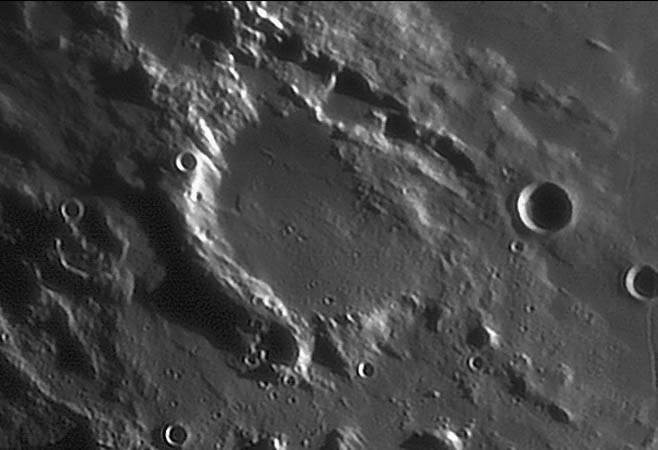Difference between revisions of "May 11, 2005"
| Line 27: | Line 27: | ||
Rukl Plate 34 | Rukl Plate 34 | ||
</p> | </p> | ||
| − | <p | + | <p><b>Yesterday's LPOD:</b> [[May 10, 2005|Theo as You've Never See It]] </p> |
| + | <p><b>Tomorrow's LPOD:</b> [[May 12, 2005|Eclipse Stamp]] </p> | ||
</tr> | </tr> | ||
</table> | </table> | ||
| Line 54: | Line 55: | ||
===COMMENTS?=== | ===COMMENTS?=== | ||
Register, and click on the <b>Discussion</b> tab at the top of the page. | Register, and click on the <b>Discussion</b> tab at the top of the page. | ||
| + | <hr> | ||
| + | <!-- | ||
| + | You can support LPOD when you buy any book from Amazon thru [[Support_ LPOD|LPOD]]! | ||
| + | --> | ||
| + | <span style="font-size:88%"> | ||
| + | <center> | ||
| + | Contributions to http://www2.lpod.org/ are licensed under a Creative Commons Attribution No-Derivative-Works Non-Commercial 3.0 License. [http://www.creativecommons.org/licenses/by-nc-nd/3.0 http://www.wikispaces.com/i/creativecommons/by-nc-nd_3.0_80x15.png]<br> | ||
| + | </center> | ||
| + | </span> | ||
Revision as of 14:23, 1 February 2015
Imperial Image
Image Credit: Paolo Lazzarotti |
|
Imperial Image Lunar craters have not been named for political or religious leaders to avoid conflicts and confusion - imagine if there were different names for a Moslem Moon or a French Moon! But one history-making political leader does have a nomenclatural tombstone on the Moon. Julius Caesar, the founder of the Roman Empire and the sponsor of a major calendar reform (hence the month July), is the name of a 90 km wide degraded crater just west of Mare Tranquillitatis. JC is essentially the same diameter as Copernicus (93 km), but that is the only similarity between these two craters. JC had the misfortune of forming sometime before 3.85 b.y. On that date the Imbrium basin-forming mega-impact occurred and Julius Caesar was near enough for basin ejecta to swirl around its northwestern rim and even flow inside. Also, notice the four or five overlapping craters that cut JCs northeastern rim - these are basin secondaries formed by large chunks of rock excavated and ejected from Imbrium. Within minutes, JC was transformed from a fresh, deep complex crater to a battered ruin. But the indignities kept coming. A look at JC under high Sun conditions reveals that its northwestern floor is dark - it contains mare lavas that fill a shallow spot in the ejecta inundated floor. Since then life has been pretty uneventful, for only a very few small craters cut into the mare patch. Technical Details: Related Links: Yesterday's LPOD: Theo as You've Never See It Tomorrow's LPOD: Eclipse Stamp |
|
Author & Editor: Technical Consultant: Contact Translator: A service of: |
COMMENTS?
Register, and click on the Discussion tab at the top of the page.
Contributions to http://www2.lpod.org/ are licensed under a Creative Commons Attribution No-Derivative-Works Non-Commercial 3.0 License. 




